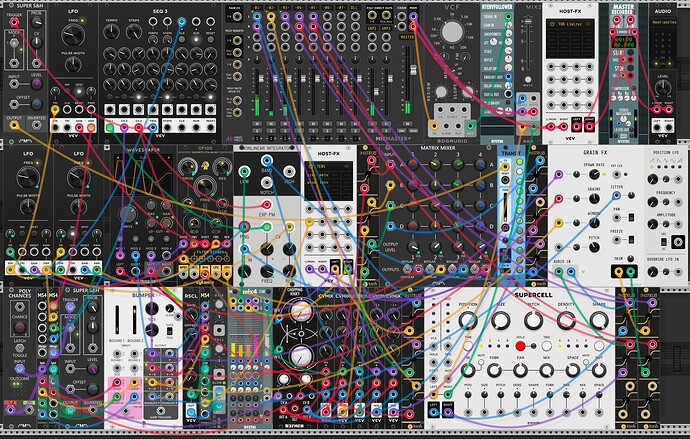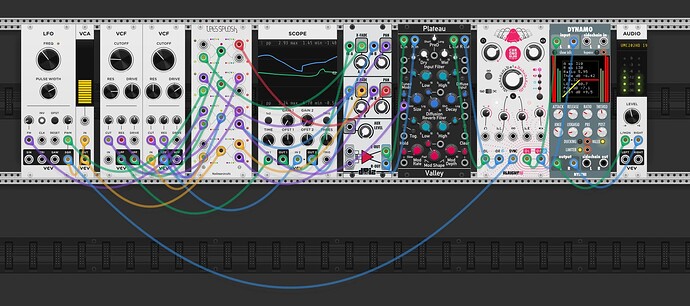More generally, using stuff beyond it’s intended and obvious use is interesting and fun. Exploiting more generalized characteristics. Often getting a deeper understanding of how stuff works and how to exploit options while exploring/experimenting.
And, yeah, feedback is fun.
Feedback is also the basis of several ‘physical modeling’ techniques. Think Karplus-Strong and/or feedback (comb) filtering FX (phaser/flanger) and/or to achieve resonance and implement resonators.
I did some crude feedback / karplus-strong / physical modeling experiments/videos some time ago when discussing Tabla/Sitar emulations.
Here’s a Karplus Strong like approach to Tabla using a mixer and tuned Delay in a near 100% feedback loop.
Here’s a short example of a feedback cycle through an EQ (effectively creating a resonator). You can can play with the ferquencies/bands and the bandwidth. Effectively a series of bandwidth filters where the feedback can go towards band level/bandwidth dependent resonance, approaching modal synthesis. Might inspire as a concept?
Here’s another approach using comb filters to create a resonator using feedback.
You could use 1 or more resonant resonant filters (e.g. bandpass) to create your own custom (resonant) filter bank. Using either or both the filter internal feedback and/or an overall external feedback loop. Various filters have various filter and resonance characteristics. You can insert all sorts of signal mangling anywhere in the audio signal path.
Generally, richer signals (including noise spectra) yield more interesting results in feedback loops.
That’s just some of my limited noodlings and thoughts…
But here’s some more advanced/inspiring examples of feedback and/or ‘no-input’ synthesis by modular/synth wizard Jakub Ciupinski
Here’s a mind boggling VCF Filter only patch
Here 's a n-times limited feedback loop through a filter (effectively serializing filters) with the option to insert stuff into the feedback paths (using polyphony modules for the looping). You could do the same in an unlimited full feedback loop.
Here he’s actually creating filters using mixer feedback, Exploiting the comb filter effect of the cable induced 1 sample delay (effectively phase shift).
Another tip is to check out HAINBACH (YouTube + albums + live performances). Hainbach uses all sorts of archaic and unusual gear (e.g. analog test equipment and obscure unusual musical instruments/gear) in creative ways. Often harkening back to days gone by (e.g. the experimental electronic music era of the forties/fifties/sixties, Pierre Schaeffer, Karl Heinz Stockhausen and such)
HAINBACH YouTube Channel:
HAINBACH Early Electronic Music Techniques Explained
HAINBACH Visiting Willem Twee Studios - a modern early electronic music studio
















